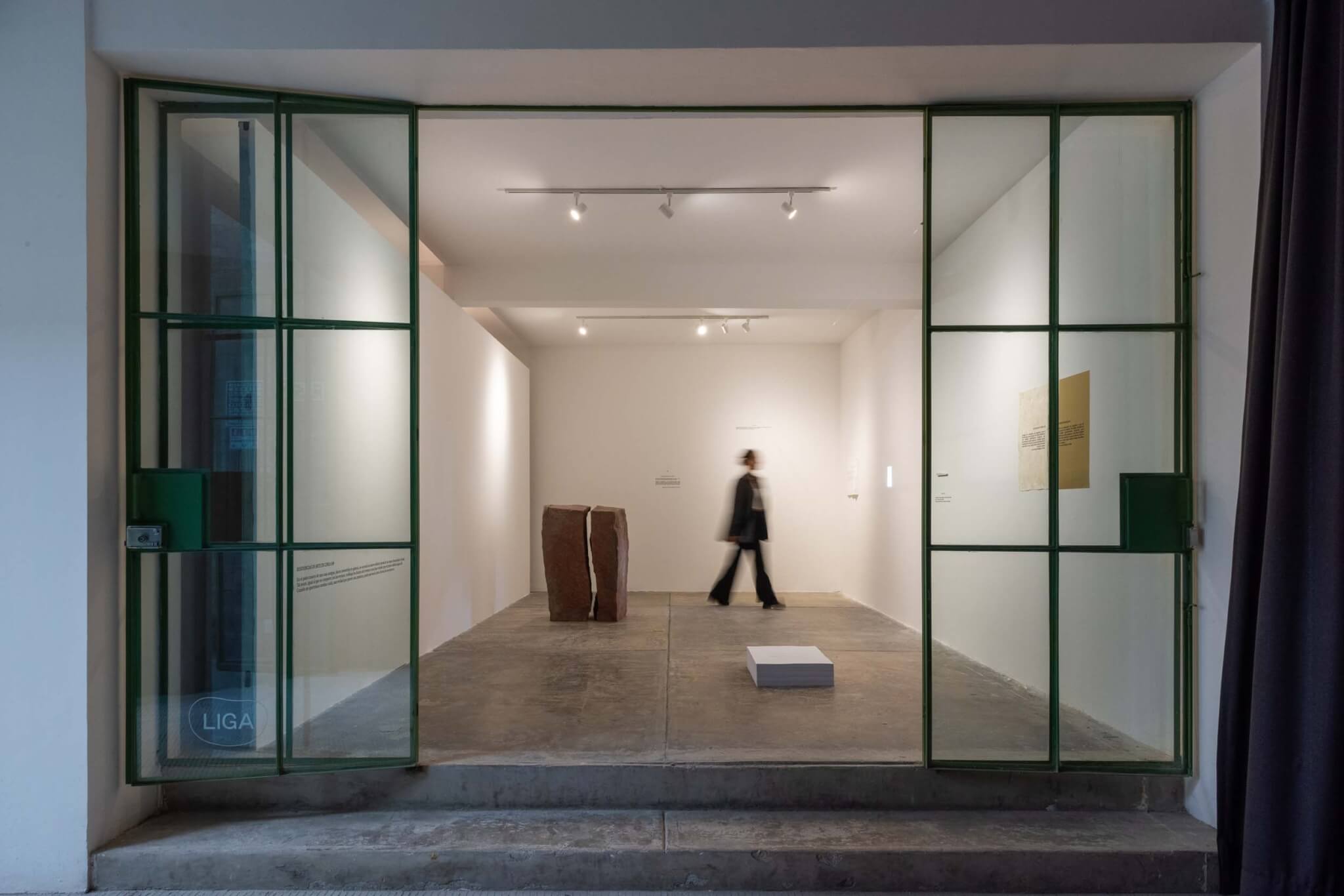In late September 2022, a large hall in a former textile factory in Mexico City’s Colonia Doctores was festively decked out. For the uninitiated, the party appeared to be a bunch of people over 30 mingling, with drinks and a good sound system. But to anyone with some knowledge of the architecture world, it was an impressive assembly. Here in the same room were Mauricio Rocha and Alberto Kalach, perhaps Mexico’s most revered living architects, conversing jovially with peers and friends. Tatiana Bilbao and Martino Stierli—the former was an honoree of the evening— were also present, as were rising and established architects from Munich, London, and Santiago. The lighting (courtesy of Lutron, a sponsor) was considered, the delicious menu created by a star chef, and the fluid, light ambience interrupted only by a few solemn speeches.
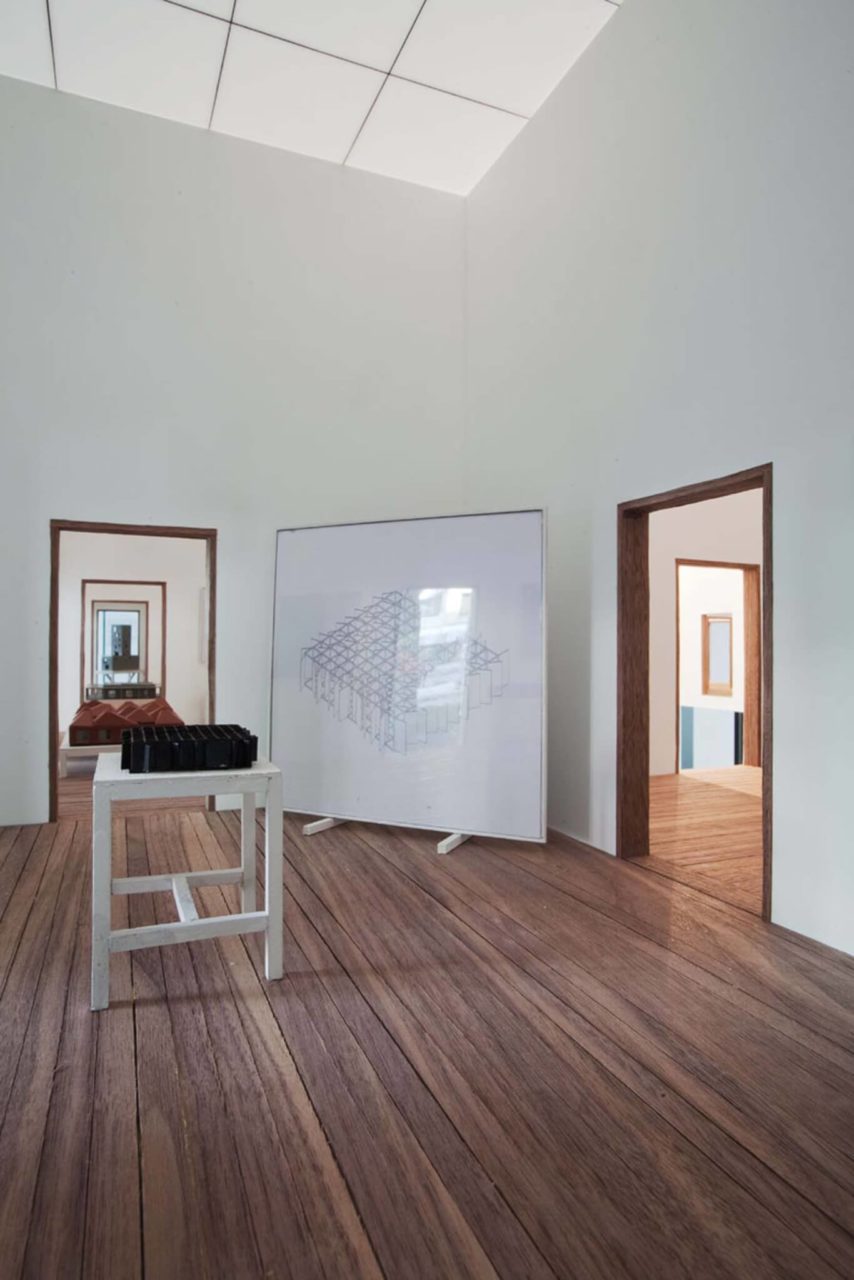
The starry affair was a testament to the prestige enjoyed by LIGA, the small not- for-profit organization whose tenth anniversary the party served to celebrate. The platform—officially LIGA, Space for Architecture—launched in 2011 as Mexico’s first independent venue dedicated to promoting contemporary Latin American architecture through exhibitions and conferences. LIGA was created by PRODUCTORA (the architecture practice led by Carlos Bedoya, Wonne Ickx, Victor Jaime, and Abel Perles) and Ruth Estévez, who felt that their hometown—and Latin America in general—lacked a space where the concerns and themes animating the region’s practices could be laid out and discussed freely. The group aimed to forge connections with colleagues from Guatemala to Tierra del Fuego, address essential questions affecting their profession, and construct a locally rooted architectural discourse. Importantly, LIGA’s founders hoped that by defining where Latin American architectural production stands from within, they would help balance foreign assessments that were often condescendingly clichéd.

In its early years, LIGA’s operations were shaped by its idiosyncratic location. Until 2017, LIGA’s nominal home was a 160-square-foot trapezoidal space with big strip windows on the street level of a paradigmatic modernist tower designed by Augusto H. Álvarez and Sordo Madaleno in the late 1940s. (LIGA was named after the Bible league that previously occupied the commercial space.) From the start, the magic of LIGA’s straightforward program was the way it made an asset out of its restrictions. Every three months, a different emerging architect or architecture office from Latin America was invited to design a mini-exhibition for the peculiar space. The brief was both simple and limiting: The site-specific installation had to elaborate on an idea crucial to the architect or firm’s practice yet avoid presenting the studio’s work too literally. Plans and maquettes were discouraged in favor of brainy explorations of themes like permeability, water, and manual labor.
As one would expect, the 35 exhibitions showcasing architects from 13 countries that LIGA has hosted so far have varied in legibility, wit, and overall success. Some architects are better than others at extrapolating key threads of their work to a setting where a compelling and concise—yet largely abstract—exposition is paramount. The main formal challenge is how to exhibit architecture without showing architecture.
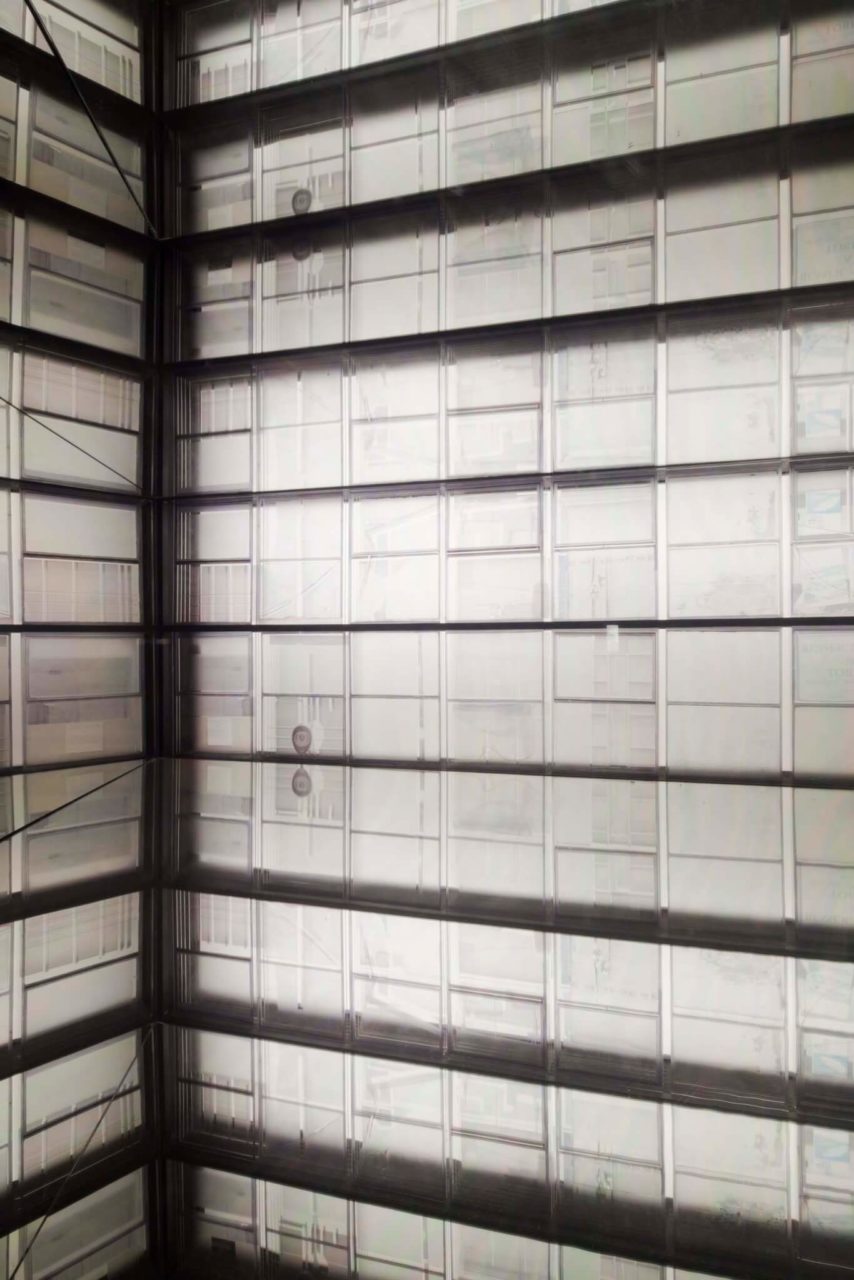
LIGA’s inaugural exhibition set a high standard for everything that has followed and remains one of its most influential to date. Conceived by Pezo von Ellrichshausen as a play on scale, spectatorship, expectation, and representation, it offered one possible template for presenting architecture conceptually without resorting to photographs by Iwan Baan or models—well, at least not the models one would expect. In fact, Pezo von Ellrichshausen did construct a miniature building, a fictive “museum,” in LIGA’s gallery. The studio’s proposition referred to the elephant in the room, an inherent dilemma that has been around as long as architecture exhibitions: If the architectural object itself is invariably a representation and, by necessity, absent, how does one represent it in an exhibition? And, by extension, does or should one even try to represent it at all?
The following year, the Brazilian architect Carla Juaçaba distilled her architectural thinking, specifically the idea of equilibrium, into a poetic installation that delivered the kind of forceful statement LIGA hoped to elicit: Juaçaba developed a topically relevant theme present in her work—the notion of physicality and tension, expressed here through long metal elements delicately suspended in midair with magnets—and inserted it into a transnational conversation among architects and anyone interested in the intellectual framework of building design today.
Over the years, other architects have reacted to LIGA’s space in original ways. Some decided to negotiate the unique situation of LIGA’s first home between two much-transited streets (and on the border between the culturally rich, dynamic neighborhoods of Condesa and Roma) by incorporating that traffic into their exhibition proposal. Openings not only spilled onto the sidewalk but continued in PRODUCTORA’s office on the ninth floor and in the building’s penthouse, where ancillary activities like talks took place. The social impact of these activations of public and private space can’t be underestimated, as they offered a valuable forum for cross-pollination to architects early in their careers used to working in isolation, with little knowledge of what preoccupies a fellow young architect in, say, Bogotá or Lima. As a result, both concrete and virtual networks were created. (Every exhibition is accompanied by a text commissioned by the invited architects, adding another layer to the web.)
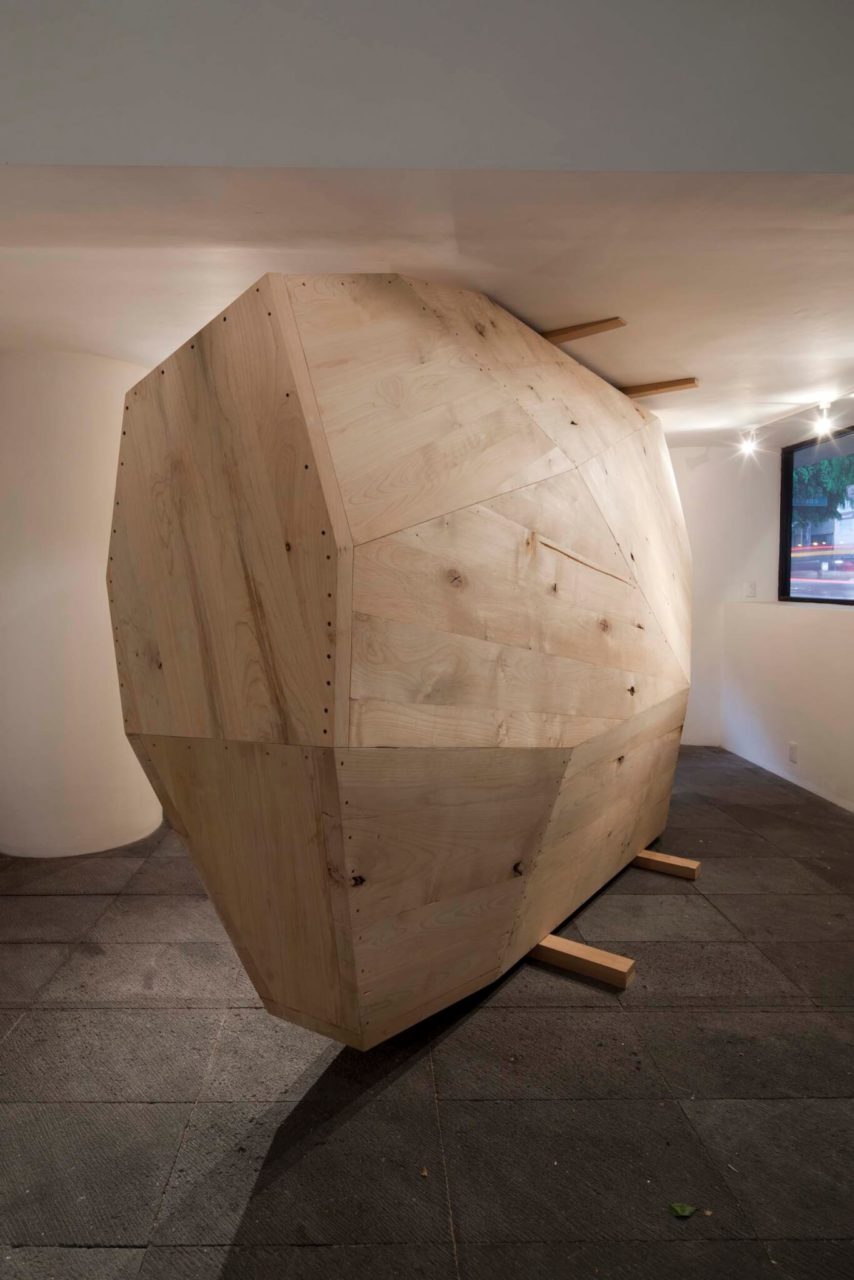
The platform’s prescient curatorial vision is evident in the roster of architects who have participated. For its sixth exhibition, realized in 2012, Frida Escobedo—at the time a largely unknown talent—tackled notions of cultural identity and questioned the purported neutrality of the modernist glass boxes that are ubiquitous in the Mexican capital. Escobedo’s exploration was typically astute and thoughtful, and the architect reprised the investigation behind her LIGA exhibit in subsequent projects. Regarding the impact of this show on her trajectory, Escobedo shared with AN:
My LIGA exhibition came at an important moment in my career. I had just completed a pretty theory-focused master’s program [at Harvard GSD]. My return to Mexico was a return to reality. I was asking myself how to produce architecture while continuing to question it. Showing at LIGA helped me with that transition—it allowed me to present more conceptual ideas while becoming re-entrenched in my day-to-day work life. The experimental nature of the ex- hibitions forces you to really distill and analyze where your practice stands, and the conversations that take place around the exhibition itself are particularly enriching. That platform to question what you’re doing, and get clarity and feedback about the direction you’re taking, is what makes LIGA so valuable.
Currently Escobedo is designing the modern and contemporary art galleries in the Oscar L. Tang and H. M. Agnes Hsu-Tang Wing for the Metropolitan Museum of Art.
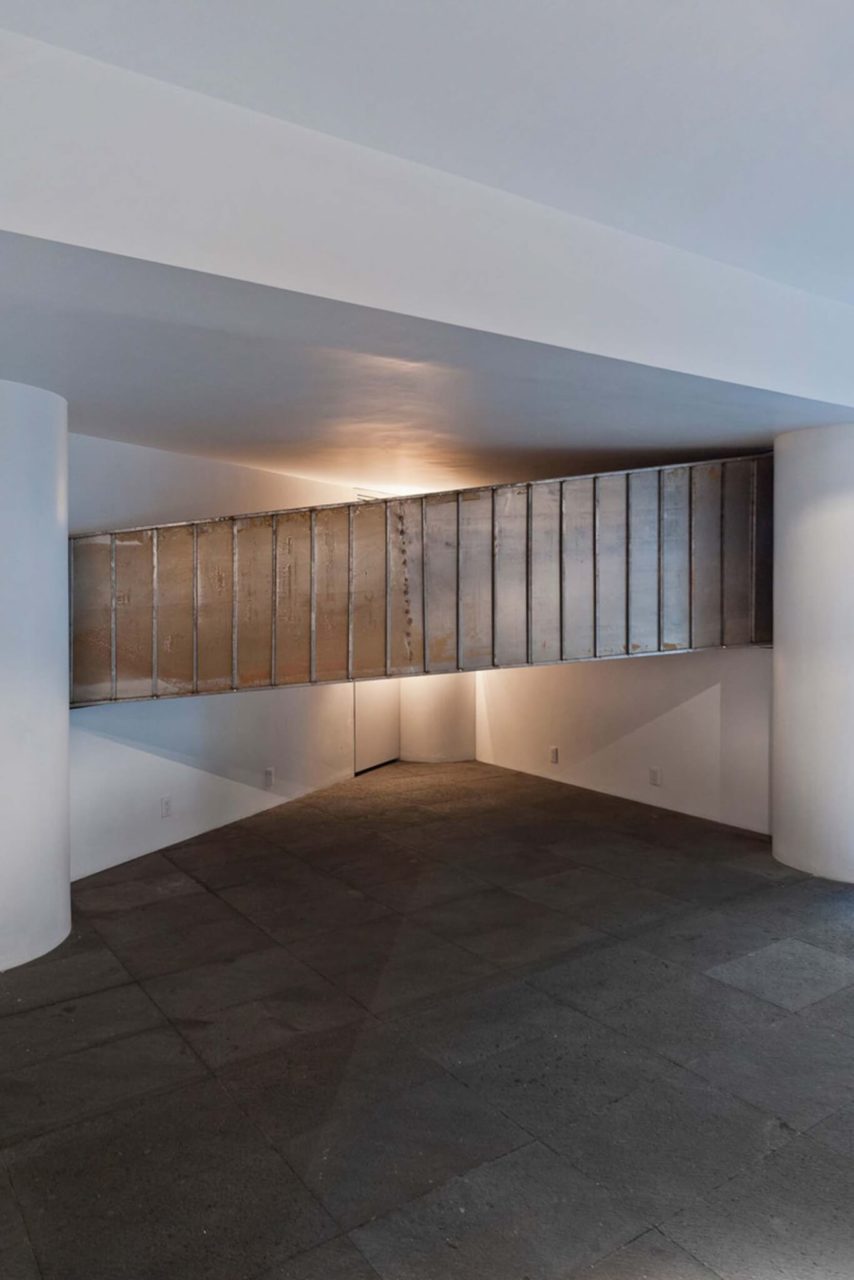
Being featured at LIGA has become an aspirational milestone for studios throughout the region. “Exhibiting at LIGA was a dream that became a reality [last] year,” said Fernando Martirena, whose Havana-based firm Infraestudio, founded and directed with Anadis González, is the subject and author of LIGA’s most recent exhibition, In Your Mind/En Tu Mente. “Since its beginning it has been the place in Latin America that guided our obsessions, a mirror where we hoped to be reflected,” Martirena said. Infraestudio’s exhibit adds Cuba to the list of countries that have been represented at LIGA and poignantly addresses the idealism required to practice in a state where private architecture is forbidden by law. To do so, Martirena and González showed nine sculptures convey- ing incipient architectural projects, formally and materially unspecified but sufficiently implied for the viewer to infer the resourcefulness at the heart of the studio’s existence. “Circumstances force us to discreetly explore the edges of a discipline that at times seems rigid,” Martirena remarked.

As the profile of LIGA has grown, its focused mission has perhaps lost some of its novelty. Yet even as a natural disaster and the COVID-19 pandemic affected the organization, it remains steadfast in its commitment to promote young firms, and its modest, precise format (and tight $2,000 budget per exhibition) hasn’t changed. After its first location sustained structural damage during the earthquake that struck the city in September 2017, LIGA, along with PRODUCTORA, moved to a new home at La Laguna, an old lace factory that has been reimagined as a contained production campus. LIGA’s anniversary dinner, delayed a year by the pandemic, took place at La Laguna, whose other tenants include a furniture brand, a coffee roastery, and other creative ventures.
LIGA’s current exhibition space, a 280-square-foot shoebox, is less exposed to the street than its first venue, and, at first glance, it can feel as if something was lost in the move. Indeed the sui generis space on Insurgentes Avenue—perhaps stemming from its small size and relation to the busy urban life outside—was a vital aspect of LIGA’s appeal. And yet from its beginning, LIGA has operated as something bigger than its limited physical footprint. In a way, the space where LIGA’s exhibits take place is incidental to its larger purpose, which is to initiate dialogues that can’t be contained in one room and in fact extend across time zones and borders.

In its first decade, LIGA put Mexico on the map as a participant in a global discourse about how to exhibit architecture, all while raising awareness of the urgent issues concerning architects in Latin America. This regional emphasis sets LIGA apart and unifies a broad area’s current production. Nonetheless, the organization’s more tangible impact has been local: Prior to LIGA, Mexico didn’t have a space dedicated to the exhibition of contemporary architecture. (The underfunded, state-run National Museum of Architecture at the Palacio de Bellas Artes mounts mainly historical surveys.)
Since 2011, Mexico City can call itself home to a small but world-class dedicated space for encounter and reflection around architecture. “The idea that architects can conceive of space critically and reflectively, without the need to design actual space, is incredibly powerful,” Escobedo said. In addition, LIGA has emerged as a nexus for social and professional links, a lifeline for the capital’s vibrant design community. Beyond the metropolis, LIGA has undeniably played an important role in fostering the interconnected architecture scene that exists today across Latin America.
